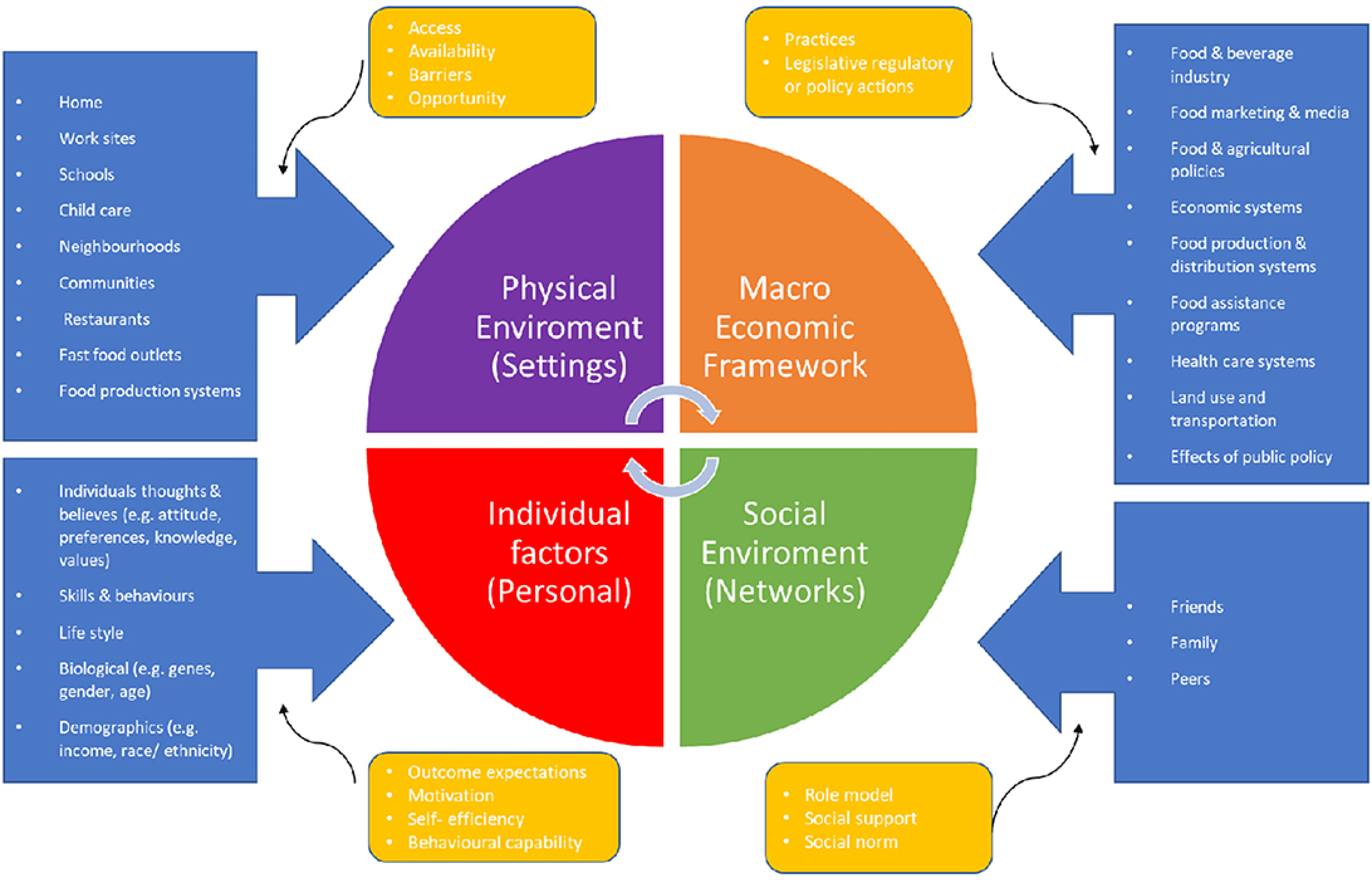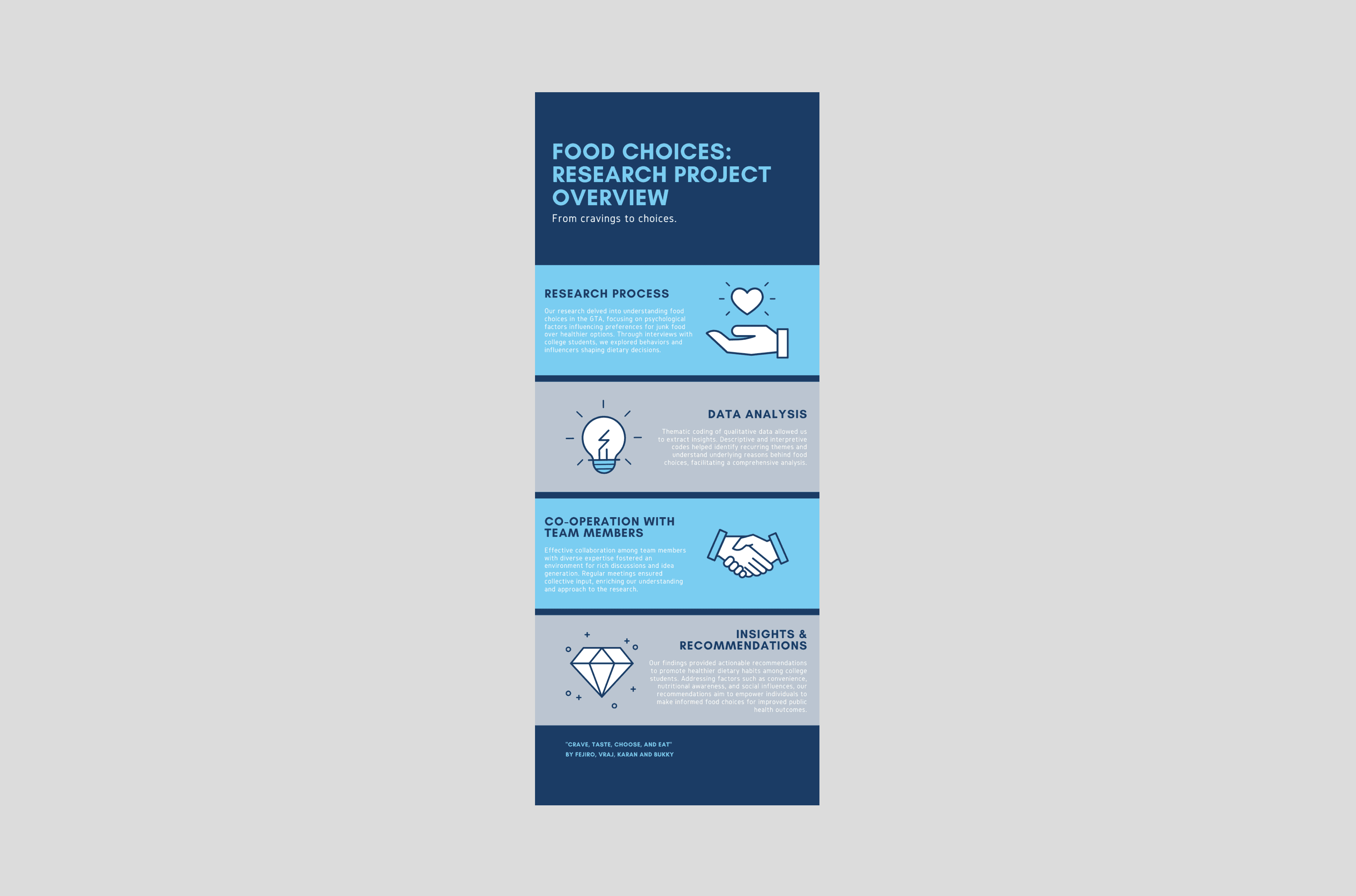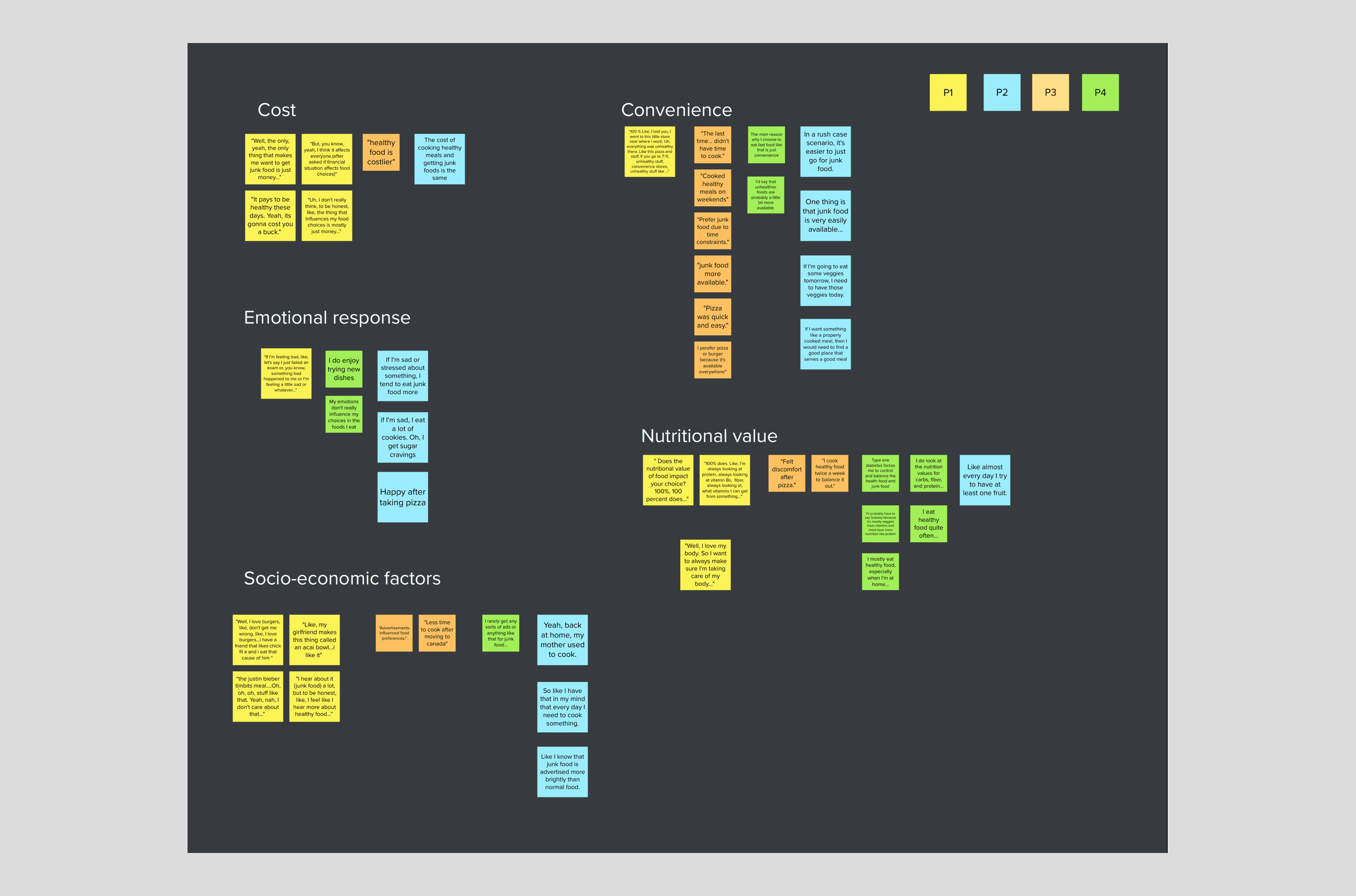Food Choices Insights
This research delves into understanding why people in the Greater Toronto Area (GTA) prefer junk food over healthier options and how psychological factors, demographics, and socioeconomic status play a role in these choices. By conducting interviews and secondary research, the study identifies key influences such as convenience, taste appeal, and social norms. The findings highlight the need for interventions to promote healthier eating habits, leading to the proposal of a digital application to assist users in making nutritious choices. Additionally, the project suggests initiatives like subsidizing healthy food options in schools to address cost and accessibility barriers.
Client:
Schools in the GTA
Role:
UX Researcher
Year:
2023
Research Background
The research focuses on exploring the food choices of individuals in the Greater Toronto Area (GTA), particularly examining why people often opt for junk food over healthier alternatives. It delves into the psychological factors influencing these choices and aims to provide insights into the underlying motivations behind dietary decisions.
Goals of the Study
Explore psychological factors influencing food choices between healthy and junk food options.
Determine differences in decision-making patterns among demographic groups in the GTA.
Investigate the relationship between socioeconomic factors and food choices, specifically focusing on income levels.
Importance of the Study
This research study in the Greater Toronto Area (GTA) delves into the mental behavior influencing food choices, aiming to address public health concerns such as obesity and dietary-related diseases. By uncovering cognitive processes and motivations, the study seeks to develop effective interventions, shape policies, and empower individuals to make healthier dietary decisions. Furthermore, it explores the economic, social, and cultural aspects of food choices, providing a comprehensive understanding of this complex issue with significant implications for both individuals and society.
Assumptions
Accessibility and availability of junk food encourage consumption.
Taste plays a significant role in food choices.
Social influence and peer pressure impact food consumption.
Mental and emotional well-being contribute to food choices.
Social advertisements influence food choices.
Hypothesis
Advertisements for junk food products increase the likelihood of choosing junk food.
Junk food serves as a form of comfort, influencing food choices.
Social connections influence decisions to consume junk food.
Appeal of taste drives people to choose junk food.
Convenience and availability contribute to the preference for junk food.
Research Methodology
This project utilizes interviews as a methodological approach to understand the reasons behind people's preference for junk food over healthy food. The interviews focus on open-ended questions to gather qualitative data, aiming to gain insights without judgment. By incorporating human experiences and perspectives, the project seeks to draw more accurate conclusions about healthy eating choices.
Approach to the Study
This research project focuses on unraveling the dietary preferences and factors influencing eating habits among college students in the Greater Toronto Area (GTA). By conducting semi-structured interviews and surveys with a diverse sample aged 18-30, the study aims to uncover patterns in food choices, including the prevalence of junk food consumption, time constraints, media impact, cultural influences, and financial factors. Through thematic coding and statistical analysis, the study seeks to provide both qualitative and quantitative insights, offering a thorough comprehension of the drivers behind dietary behaviours among college students in the GTA.
Key Insights from Interviews
1. Convenience is a significant driver of fast food consumption.
2. Health considerations play a role in food choices, with a focus on nutrition values.
3. Minimal influence of emotions and advertising on food choices.
4. Striving for a balance between healthy and fast food options.
5. Preference for routine and convenience in meal selections.
Summary for Affinity Mapping
Financial constraints pose a barrier to healthier food choices.
Emotional well-being is linked to food preferences.
Social connections and cultural background influence food choices.
Convenience is a significant driver.
Nutritional awareness is high.
Digital Product Design Solution
For the digital product design solution stemming from our research, we propose an application aimed at facilitating healthy eating habits among users, particularly college students in the GTA.
The app functions by providing gentle reminders to users about cooking times based on their schedules, encouraging regular healthy eating. Upon onboarding, users can share their dietary restrictions, ensuring personalized recommendations.
Key features include the ability to:
Input available ingredients at home to receive suggestions for healthy recipes.
Search for specific recipes and compare their nutritional values to promote healthier choices.
Add weekly schedules to receive notifications for cooking times, aiding in meal planning and preparation.
Seamlessly transition to grocery shopping by linking to existing apps like Walmart or Instacart for ingredient purchases.
Engage in gamification elements, such as competing with friends and maintaining healthy eating streaks, to encourage continued healthy habits.
Overall, the application aims to address the identified research gap by providing a user-friendly solution that empowers college students to make healthier dietary choices while accommodating their busy lifestyles.
Conclusion
Through comprehensive research and analysis, this study provides valuable insights into the complex factors influencing food choices and offers practical solutions to promote healthier eating habits in the GTA community.



